IONCINEMA.com’s IONCINEPHILE of the Month feature focuses on an emerging filmmaker from the world of cinema. This past January at Sundance, we were introduced to Bing Liu and his docu debut, Minding the Gap (winner of the US Documentary Competition Jury Award for Breakthrough Filmmaking). This raw, intimate portrait will be released via Hulu on August 17th. Make sure to check out Part 2 of our profile – with Bing Liu’s Top Ten Films of All Time.
Eric Lavallee: During your childhood…what films were important to you?
Bing Liu: When I was a freshman in high school, one of my best friends had an older half-brother who stayed in a one-room apartment on the edge of town. It became a hub for drinking, drugs, sleeping on floors, and, most memorably, watching movies on DVD that challenged and enthralled us. This is where I saw films like Donnie Darko, Mulholland Drive, Waking Life, Kids, and Gummo–films that reflected (either emotionally or literally) our adolescent experiences and how we viewed a world we’d begun questioning more and more. The apartment was attached to a dog shelter that the brother also worked at, so all day and night we’d hear cacophonous barking and we’d have to pause the films for him to go next door to calm the dogs down.
Lavallee: During your formative years what films and filmmakers inspired you?
Liu: Definitely Linklater. First for Waking Life and then for Slacker and then the Sunrise/Sunset series. For sure Harmony Korine as well. Gummo changed the way I saw cinema.
Lavallee: If you had to name just one title, which skateboarding docu film taught you the most about cinema?
Liu: I didn’t really see any skate-docu-film for a long time–it wasn’t until my mid-20’s, when I was making Minding the Gap, that I saw classics like Dogtown and Z Boys. I guess I consider Kids a documentary disguised as fiction. I saw Kids as a teen and I loved it–it taught me that you don’t need big-budget production values and A-list actors to get at truth.
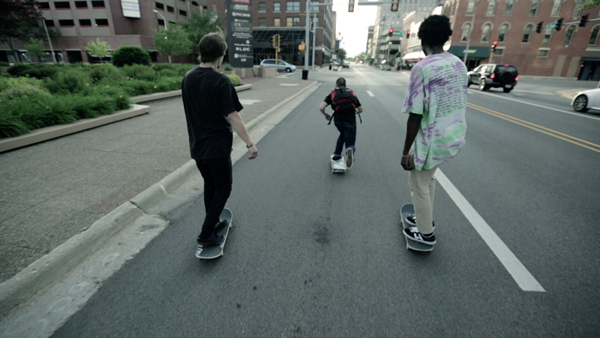
Lavallee: As I was watching MTG, I was drawing parallels to Hoops Dreams in terms of how your young players might have the odds stacked against them, how your timeline displays individual trajectories and by the doc film’s end I was reminded of the production co. involved with the project. How early did Kartemquin get involved with the project and what was the best takeaway to help guide you in your feature debut?
Liu: I was a fellow in Kartemquin’s Diverse Voices in Documentary lab in 2014. After the fellowship, Justine Nagan, Tim Horsburgh, and Gordon Quinn really believed in the project and approached me to co-produce with Kartemquin and I signed on at the beginning of 2015. Right off the bat, Kartemquin helped me secure a spot at Tribeca’s Industry Meetings that Spring, where I began building relationships and becoming acquainted with the wider documentary space. Then in the fall of 2015, Steve James hired me to direct three stories for his upcoming miniseries America To Me, which was a big break for me, professionally–while filming for this project, I asked him to come on as an EP. Throughout the process, Gordon Quinn and I would sit in his office to watch rough cut screenings and talk through story elements more in-depth. My biggest takeaway is that independent films have a much better chance of being made and entering the world when they get the sort of institutional support that Kartemquin excels at.
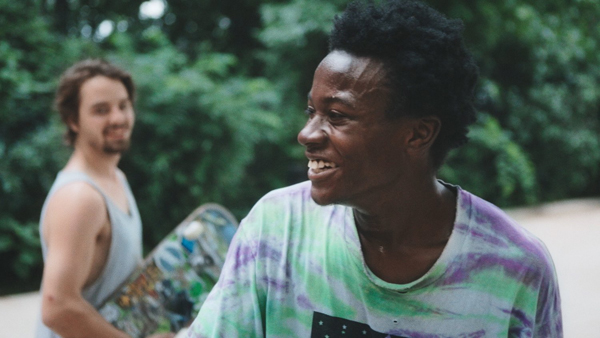
Lavallee: I noticed how important the notion of framing is in your pic (was reminded about POV just in the sequences relating to a talking heads set-up). How did shooting street style and the freestyle testimonials inform you on aesthetic choices you made much later in the timeline?
Liu: I didn’t go to film school and I didn’t have a media program in my high school, but I connected with a group of other skate videographers on an online forum called Skate Perception as a teenager, learning about concepts like rule of thirds and depth of field and screen direction from the more ambitious of the users on the site. We would critique each others’ cinematography and editing–not just on our skate videos but our other film projects as well. By the time I was 19 and got my first production assistant job and I continued to learn on-the-job from commercial and studio DPs. One cameraperson, Thomas Ciciura, would challenge me when panning from a shot to another shot to not have to adjust but land perfectly on that next frame. Another challenged me to use a 35mm photo camera to take a photo, then go back a month later to recreate that photo exactly. I made one of my first films around this time which won me a partial scholarship to go to film school, but, because of the advice of almost every person I was working with, I decided to study literature at a state university instead.
Around when I began shooting Minding the Gap in my mid-20’s, I had been working in the camera department on Shameless and Chicago PD, both of which are primarily shot handheld. By then, filming handheld had become intuitive–but seeing how even handheld shooting is a disciplined process improved how I was doing my on-the-fly style on Minding the Gap. Still, throughout shooting, I was sitting people down and lighting them with these small battery-powered LEDs with the camera on sticks. But even in these situations, I kept the tripod head loose and kept the lighting natural to keep the vivacity of the style alive. Ultimately the interviews that actually made it in the film were the more the on-the-fly ones.
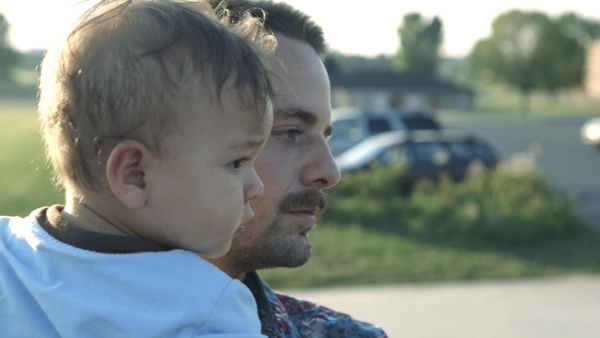
The most formal scene was the interview with my mother, which is the only time I wasn’t a one-camera-crew for. I hired a couple friends to run camera and sound. I sent both of them the rough cut of the film and explained to them that I wanted them to record every moment leading up to, during, and after the interview–I knew that this would be my one shot at capturing myself being truly vulnerable and not hiding behind the camera. Even still, while editing, it took a lot of searching to find those moments where my emotional shield was down and I was viscerally reacting to the interview. The notion of framing comes to a head during this scene because every camera represents a different layer of perspective–there’s my view of my mom, there’s my friend’s view of me, and then there’s the behind-the-scenes view of the production. So not only am I coming out from behind the camera at this point in the story, which is about the halfway mark, but the film is revealing something about itself too, changing the rules up on the audience.
It wasn’t until the final months of editing when I began poring through all that old footage from my childhood skate videos and it totally felt like a time warp, back to a totally primordial way of doing cinematography. It was sort of like revisiting what adolescence represented: a time when there were no rules, when it was less about formalities and more about feelings. Over the years I’ve learned a lot of rules in filmmaking, but Minding the Gap presented an exciting opportunity to break them.
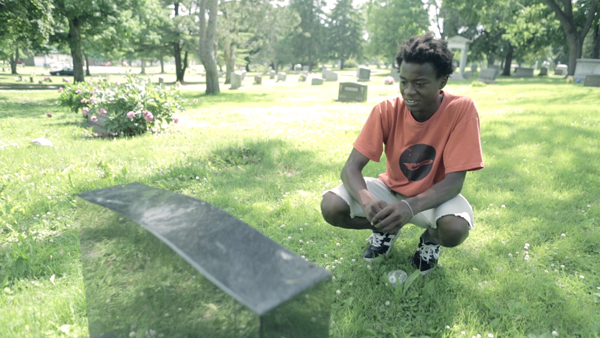
Lavallee: At the moment you know that your footage will become a film — did you know that you would enlist yourself as one of the characters?
Liu: The second interview I ever did with Keire was in his attic, when we commiserated about crying after getting beaten. It was a moment that I kept in rough cuts over the years, as a nod to why I’m making this film. For a long time, I felt that’s all that was needed about me. But when Nina told me that Zack had been abusive, it felt necessary for me to be in the film–if I wanted to delve into domestic violence in Zack and Nina’s relationship, a very private matter, I had to justify going there as a filmmaker. And on the flip side, it gave my character a dramatic arc of wanting to know something that made going into my family’s backstory feel more earned.
Lavallee: Having premiered at Sundance and having had a lengthy film fest circuit afterlife, was there an adjustment in the post-script phase for your players – have they warmed up to the idea that the private is now public?
Liu: I think there was a pre-warming-up that started long before Sundance. While we were filming, I told Zack, Keire, and Nina that I’d show them the film for their input when it was close to finished. And as news started breaking last year of us getting funding from POV, ITVS, and Sundance as well as us getting into programs like Film Independent Doc Lab and Garrett Scott Development Grant, they became more aware that the potential audience viewership was bigger than imagined. Still, when we got into Sundance, I remember there was this sense of “Wait, what’s this festival you want us to come out to in the middle of Utah?” Much of the success of the film is, to a certain extent, still happening within the bubble of the film world. But as they’ve started coming out to screenings, they’ve been met with a deluge of love, tears, and empathy. When the film hits theaters and streams on Hulu and broadcasts on POV, I think they’re only going to get more visceral responses. But right now I think they’re all (and I am) still processing it and will be for a long time.
Lavallee: Can you discuss the collaborative process you had with Kartemquin?
Liu: I think of Kartemquin like a trusting parent for Minding the Gap as it learned to walk, began speaking comprehensible sentences, went through an awkward emo phase, and ultimately went off into the world. Over the years, they provided honest feedback, let me make explore, and always offered consoling words with every rejected grant application. One person I could NOT have done this without is Diane Quon, whom I met when she came to a feedback screening I had at Kartemquin a couple years ago, right before we started getting traction with funding and labs. She was instrumental in keeping budget, paperwork, and deliverables in order, which is a full-time job on its own. She is one of those people with a heart-of-gold and I’m happy to call her my friend.
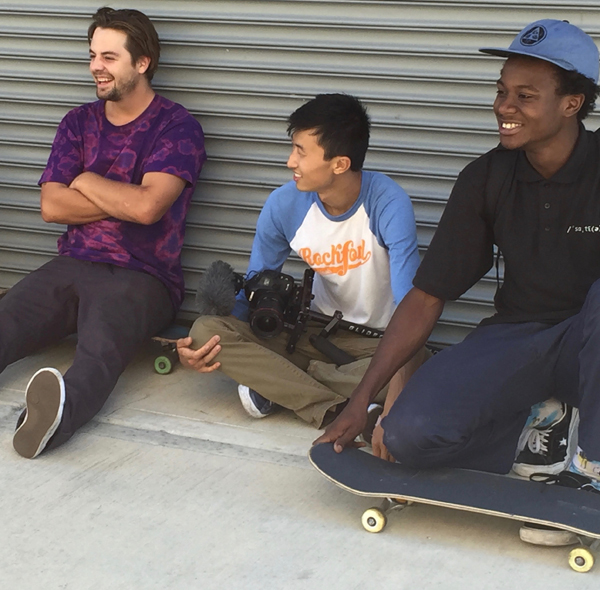
Lavallee: Can you discuss the collaborative process you had with Josh Altman?
Liu: I met Josh last Spring working on a development film that I shot in Chicago and was editing in LA–he was assigned to me by the commissioning company, Concordia Studios. Over the course of a month, we discovered we shared the same taste in storytelling. After delivering our development film, I convinced him to come onto Minding the Gap. He was editing another documentary at the time, Kailash (which also went to Sundance)–but lucky for me they took a couple of months off. So Josh and I holed up in an Airbnb in Venice, setting up shop on a kitchen table, both of us cutting on our laptops at a frenetic pace. From July to October, we must’ve had five or six different cuts of the film that we played in feedback screenings. We worked so well together that we’re now co-directing the feature version of the development piece we worked on last year.
Lavallee: Can you discuss the collaborative process you had with Sound Design and Score?
Lavallee: Nathan Halpern and Chris Ruggiero did an amazing job turning around an original score that they couldn’t start in earnest until I delivered the picture locked film, which was in early December. Our sound mixer Jim LeBrecht offered to work that stretch between Christmas and New Years to make our Sundance delivery deadline. All of them took a lot of creative risks with me. Jim and I played a lot with bass tones during the skating and did subtle things like with leaving in what mixers would usually clean up to tell the story of the filmmaker. A lot of it felt like a blurry 11th-hour thing. In particular, that cue for the final culminating intercut montage didn’t quite work until the final few hours. I remember music editing stems on my laptop that Nathan had recorded that same day and then quickly exporting them and throwing them Jim’s ProTools session, then repeating that process again. It must’ve been 3am when we were doing confidence checks. Jim was so devoted to the project and so patient that he didn’t yell at me once. Not to mention that he and his partner Sara have an upcoming film of their own–Crip Camp–that’s absolutely amazing.


